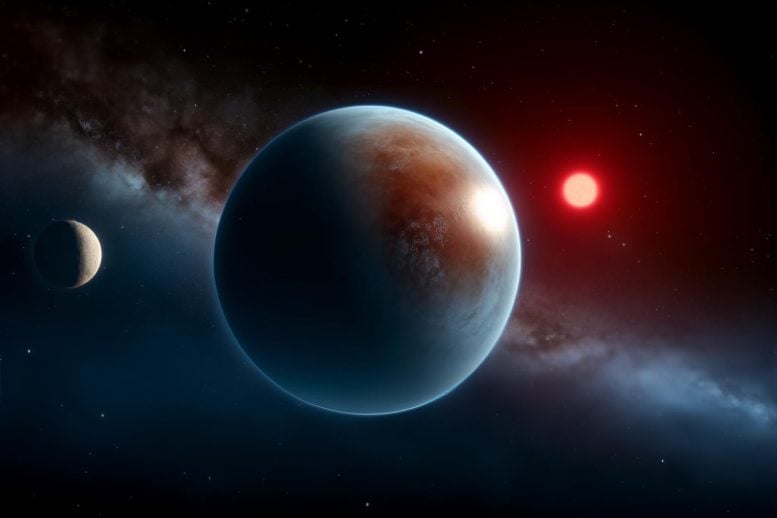Is Gliese 12 b Venus' Malevolent Double or Earth's Forgotten Cousin? The Mystery Unraveled

The unearthing of Gliese 12 b, a planet bearing similarities to Venus and positioned only 40 light years away, opens up fresh opportunities for study on conditions conducive for life in the universe. This "malevolent twin" of Earth gets significant higher radiation from its star compared to our planet, suggesting interesting points of exploration for future research using advanced telescopes. Credit goes to SciTechDaily.com.
Recent discovery of a planet akin to Venus, given the name Gliese 12 b, brings new insights to our quest for planets capable of supporting life, offering a closer examination of potential "malevolent twins" of our own planet.
Detection of a Venus-like planet circling a star in the vicinity of our Solar System nurtures the aspiration that someday astronomers may unravel the mystery of the emergence of life on Earth.
Studying life in the cosmos is an uphill battle because Earth is the only known example of a life-supporting planet. It's challenging to determine which aspects of Earth are essential for the existence of life and which aren't. Until an "Earth clone" with conditions for life is discovered, astronomers can only scrutinize "malevolent twins," or planets with Earth-like initial conditions that nevertheless developed into life-less environments.
Both Venus and Mars in our Solar System exemplify such barren "malevolent twins." But having only these two models leaves us with considerable uncertainty about the specific conditions necessary for life. Since the 1990s, over 5,500 planets have been found orbiting stars apart from the Sun. However, the vast majority of these planets are hundreds of light years away from Earth, making detailed examination problematic.
In this study, the research team uncovered and analyzed a new planet, Gliese 12 b, with data from NASA’s TESS space telescope; the MuSCAT2 and MuSCAT3 cameras, created by the Astrobiology Center (ABC) in Japan and the University of Tokyo; and Japan's National Astronomical Observatory's Subaru Telescope. Located a mere 40 light-years away, in the direction of the Pisces constellation, Gliese 12 b is easily accessible for further investigation using NASA’s James Webb Space Telescope and future 30-m class telescopes.
An international team of scientists from Japan's Astrobiology Center, the University of Tokyo, the National Astronomical Observatory of Japan, and Tokyo Institute of Technology determined through their research that Gliese 12 b completes an orbital period or one year, in just 12.8 days. This planet's radius is just 4% smaller than that of Earth and it is below 3.9 times the mass of Earth. Gliese 12 b absorbs 1.6 times more radiation from its companion star than we do from the Sun. To put it in perspective, Venus takes in 1.9 times more radiation than Earth.
From the gathered data, the team deduces that Gliese 12 b is an "malevolent twin," similar to Venus than Earth. However, they can't dismiss the possibility of Gliese 12 b being an "Earth clone" with a water-filled surface. Additional observations will establish if Gliese 12 b is an "malevolent twin" or an "Earth clone." Regardless of the outcome, studying Gliese 12 b will help us grasp better the prerequisites for life-supporting environment on a planet.
More information about this discovery can be found in the article on TESS’s most recent discovery and its implications for our search for extraterrestrial life forms.




